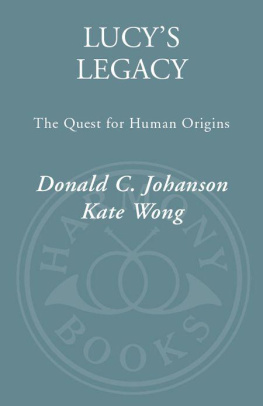Lee Berger - Almost Human: The Astonishing Tale of Homo naledi and the Discovery That Changed Our Human Story
Here you can read online Lee Berger - Almost Human: The Astonishing Tale of Homo naledi and the Discovery That Changed Our Human Story full text of the book (entire story) in english for free. Download pdf and epub, get meaning, cover and reviews about this ebook. year: 2017, publisher: National Geographic, genre: Non-fiction. Description of the work, (preface) as well as reviews are available. Best literature library LitArk.com created for fans of good reading and offers a wide selection of genres:
Romance novel
Science fiction
Adventure
Detective
Science
History
Home and family
Prose
Art
Politics
Computer
Non-fiction
Religion
Business
Children
Humor
Choose a favorite category and find really read worthwhile books. Enjoy immersion in the world of imagination, feel the emotions of the characters or learn something new for yourself, make an fascinating discovery.

- Book:Almost Human: The Astonishing Tale of Homo naledi and the Discovery That Changed Our Human Story
- Author:
- Publisher:National Geographic
- Genre:
- Year:2017
- Rating:3 / 5
- Favourites:Add to favourites
- Your mark:
Almost Human: The Astonishing Tale of Homo naledi and the Discovery That Changed Our Human Story: summary, description and annotation
We offer to read an annotation, description, summary or preface (depends on what the author of the book "Almost Human: The Astonishing Tale of Homo naledi and the Discovery That Changed Our Human Story" wrote himself). If you haven't found the necessary information about the book — write in the comments, we will try to find it.
In 2013, Berger, a National Geographic Explorer-in-Residence, caught wind of a cache of bones in a hard-to-reach underground cave in South Africa. He put out a call around the world for petite collaboratorsmen and women small and adventurous enough to be able to squeeze through 8-inch tunnels to reach a sunless cave 40 feet underground. With this team of underground astronauts, Berger made the discovery of a lifetime: hundreds of prehistoric bones, including entire skeletons of at least 15 individuals, all perhaps two million years old. Their features combined those of known prehominids like Lucy, the famous Australopithecus, with those more human than anything ever before seen in prehistoric remains. Bergers team had discovered an all new species, and they called it Homo naledi.
The cave quickly proved to be the richest primitive hominid site ever discovered, full of implications that shake the very foundation of how we define what makes us human. Did this species come before, during, or after the emergence of Homo sapiens on our evolutionary tree? How did the cave come to contain nothing but the remains of these individuals? Did they bury their dead? If so, they must have had a level of self-knowledge, including an awareness of death. And yet those are the very characteristics used to define what makes us human. Did an equally advanced species inhabit Earth with us, or before us? Berger does not hesitate to address all these questions.
Berger is a charming and controversial figure, and some colleagues question his interpretation of this and other finds. But in these pages, this charismatic and visionary paleontologist counters their arguments and tells his personal story: a rich and readable narrative about science, exploration, and what it means to be human.
Lee Berger: author's other books
Who wrote Almost Human: The Astonishing Tale of Homo naledi and the Discovery That Changed Our Human Story? Find out the surname, the name of the author of the book and a list of all author's works by series.








